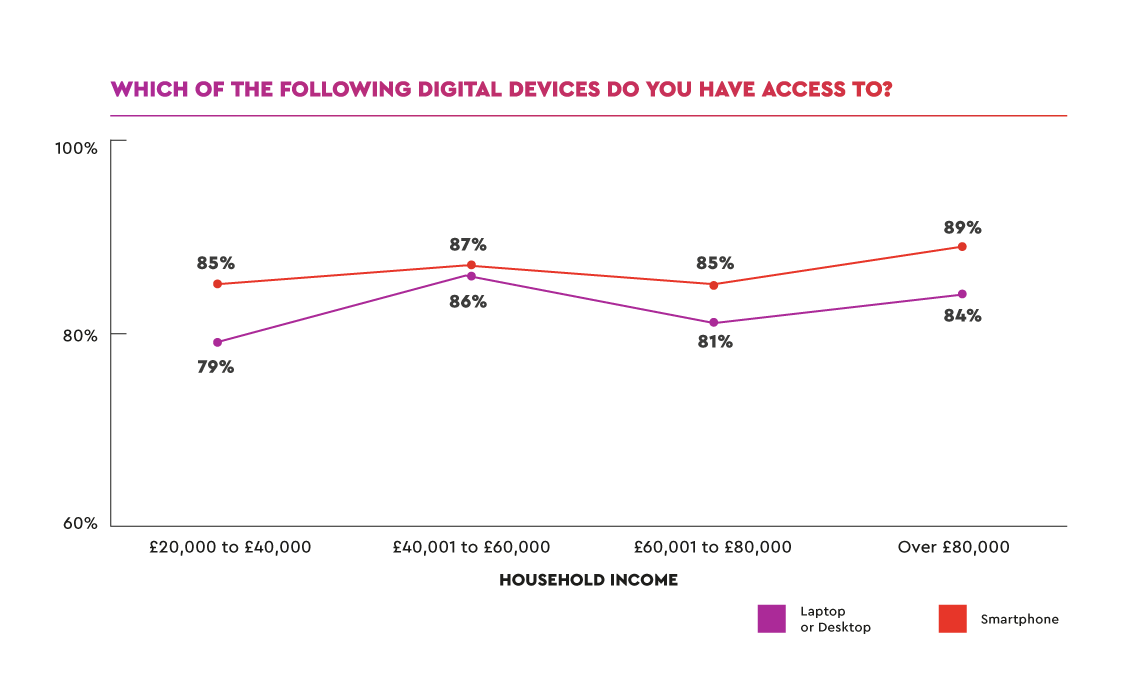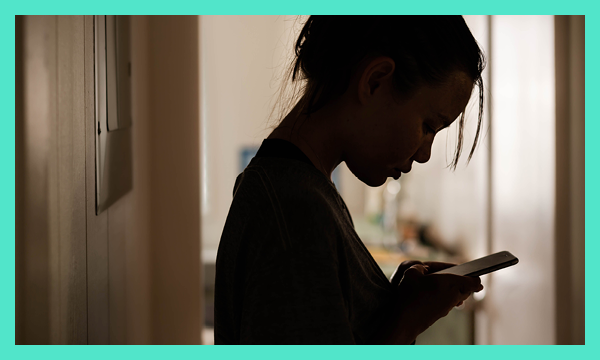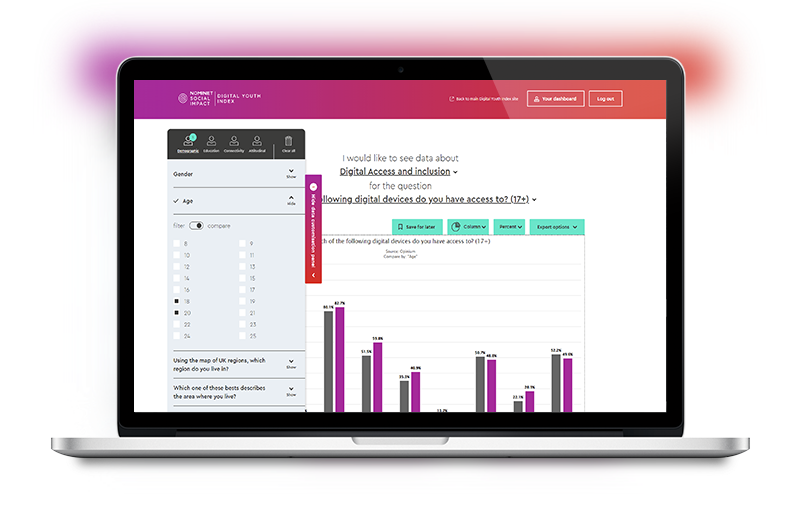Reverting to paper: Digital barriers compound for the most disadvantaged young people
Approximately 2.2 million (15%) young people have a smartphone but no access to a laptop or desktop
One in five (20%) young people do not have access to a laptop or desktop computer, increasing to 26% of those in C2DE social grades and 30% of those living in households with a combined income below £20,000. 15% (approximately 2.2 million) of young people have a smartphone but no access to a laptop or desktop.
Almost one in ten (9%) aren’t satisfied with the device they have access to, increasing to 15% of those with a household income of less than £20,000.
While 87% of young people have a smartphone as their primary means of communication, our qualitative research with teachers highlights these are not ideal for learning.
A third (32%) of young people do not have access to home broadband.
Why does this matter?
Whether it is an inadequate device that can’t run the right software, a smartphone-only household, a shared device, limited or no internet access – there is a huge variety of digital barriers limiting the ability to maintain education. This has been pronounced when going into school or college is not possible or digital systems are increasingly used to compliment traditional classrooms. And digital barriers are more likely to persist in disadvantaged households. It only takes one of these barriers to isolate a young person from access to education, to teachers, and to peers.
Implications
- What questions of quality should we ask when distributing devices?
- Who will fall through the gaps of not being eligible for devices, but struggle to perform tasks because of their own device quality?
- How can we better understand comprehensively the digital barriers to education and how they interact with one another?




